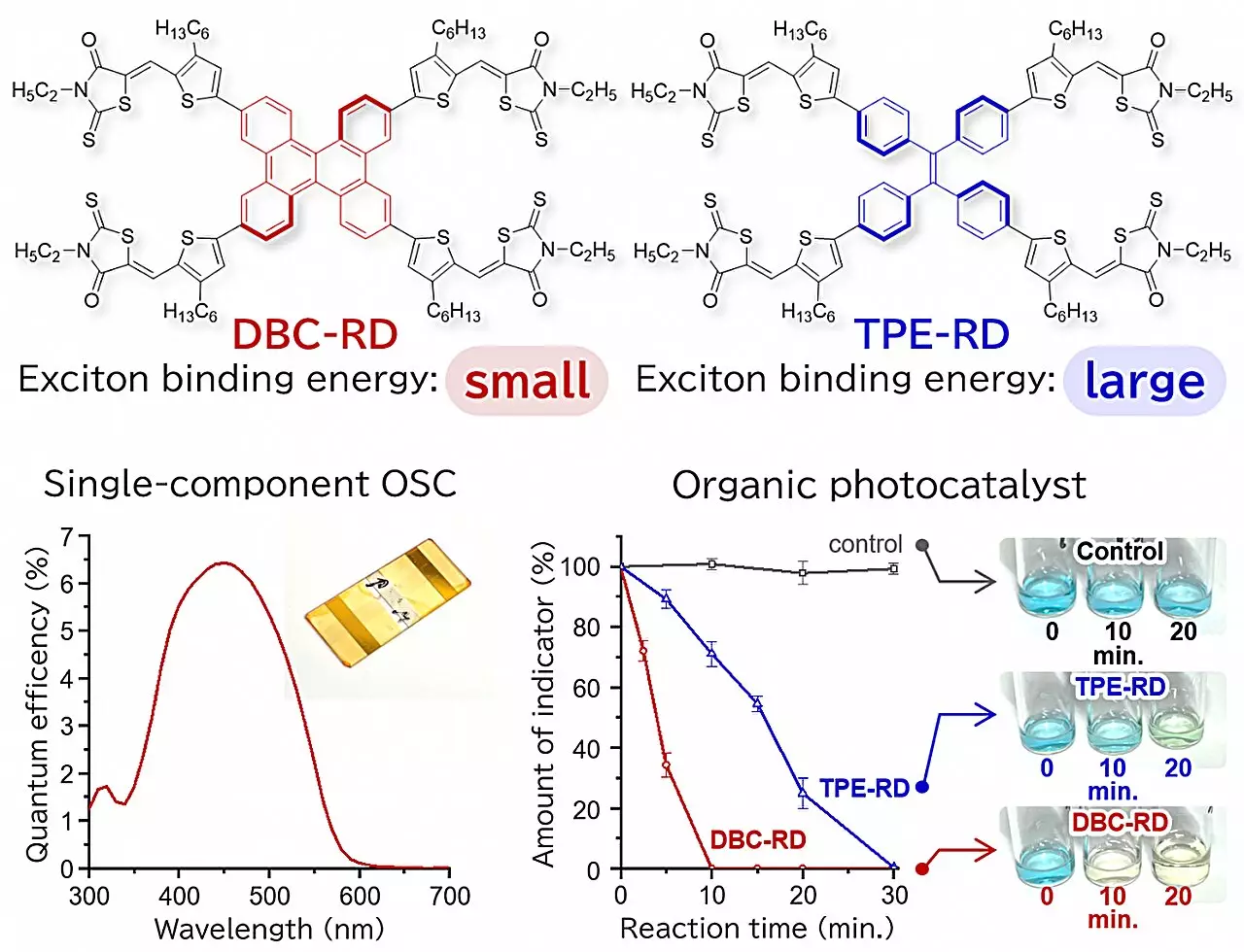As the world grapples with climate change and diminishing fossil fuel reserves, the quest for sustainable energy sources has never been more urgent. Solar energy, harnessed through optoelectronic devices such as solar cells, represents a pivotal part of the clean energy landscape. The efficiency of these devices hinges on their ability to convert sunlight into electricity, which can be significantly enhanced through innovative material designs. Recent research led by Osaka University illuminates a promising path towards optimizing device performance by controlling the configuration of light-absorbing organic molecules.
At the heart of solar cell technology lies a concept known as exciton-binding energy, which denotes the energy required to generate free-charge carriers—particles that facilitate electric current. The efficiency of organic solar cells is directly influenced by their ability to generate these carriers. Typically, lower exciton-binding energy correlates with improved performance, making it essential to develop organic molecules that can function effectively in solid states. Despite the potential, achieving low exciton-binding energy configurations remains a significant challenge within the field of organic optoelectronics.
The recent study from Osaka University sheds light on this complex challenge. Researchers synthesized two variations of star-shaped molecules, differing in their core flexibility. While these molecules exhibited comparable behaviors in solution, their performance diverged significantly when arranged in solid films. The rigid molecules exhibited a preference for stacking efficiently, leading to a notable reduction in exciton-binding energy. Conversely, the flexible molecules struggled to aggregate, resulting in higher exciton-binding energy levels and subsequently poorer performance.
Lead author Hiroki Mori’s research highlights the critical role of molecular structure in determining device efficiency. The findings indicate that optimizing how these molecules pack together could be key to enhancing solar cell capabilities.
The implications of these findings are profound. By understanding the importance of molecular aggregation and exciton-binding energy, researchers open the door to the next generation of organic solar cells and other optoelectronic applications. The team’s experiments, which demonstrated superior performance in devices constructed from rigid molecules, signal a shift in design strategy. The ability to control molecular interactions not only promises to refine the effectiveness of solar cells but may also extend to various facets of optoelectronic technologies, including photocatalysts.
As cutting-edge research continues to unveil the intricacies of organic molecule behavior, the potential for more efficient solar energy conversion is on the horizon. The advancements driven by this Osaka University study signal a new chapter in renewable energy technology, emphasizing the importance of material science in the development of sustainable solutions. The path forward is clear: by harnessing the power of well-aggregated molecules, we can pave the way for a robust future powered by clean, renewable energy.


Leave a Reply